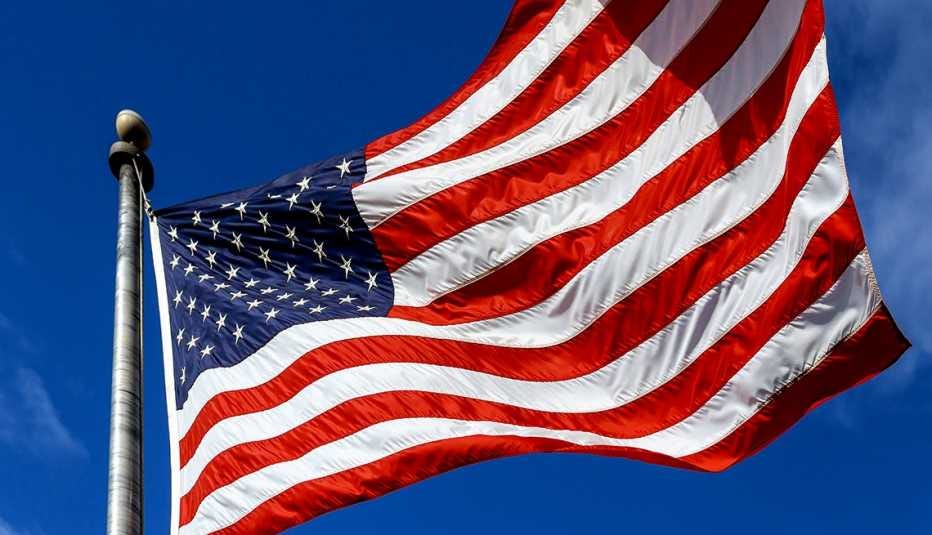Issue #701 The Choice, Tuesday, August 13, 2024
Please share and subscribe to help us grow this publication.
If you like us, REALLY like us, please click the “Like” button at the end of this post!
We appreciate your support!
In the last few decades, the extremist right wing has co-opted our American flag for their own purposes. They claim that only they have the right to fly the flag and that the flag belongs only to them, even as they desecrate the flag in numerous ways. There are specific protocols and guidelines for its proper display and for honoring it during ceremonies like the Pledge of Allegiance and the National Anthem.
As you review these protocols, it is also important to remember that all of us, including school children, have a First Amendment right to not stand for the Pledge or the Anthem. These protocols are just that—protocols, not laws.
“The Star-Spangled Banner,” written in 1814, including its racially charged third verse, was not officially our national anthem until 1931 when then-President Herbert Hoover signed a bill into law.
The Pledge of Allegiance, originally written in 1842, was not standardized until World War II, and “under God” was only added in 1954 by President Dwight D. Eisenhower as a “bulwark against communism.” Eisenhower also added “In God We Trust” to American paper money in 1956.
Displaying the American Flag
1. Proper Position: The flag should be displayed with the union (the blue field with stars) at the peak of the staff unless it is being flown at half-staff, in which case it should be first hoisted to the peak for an instant and then lowered to the half-staff position. When lowering from half-staff, it should again be raised to the peak before it is fully lowered.
2. Display Indoors: When the flag is displayed against a wall, whether vertically or horizontally, the union should be at the top and to the flag’s right (the observer’s left).
3. Display Outdoors: The flag should be hoisted briskly and lowered ceremoniously. It should not be displayed during inclement weather unless it is an all-weather flag. When flown at night, it should be properly illuminated.
4. Respectful Placement: The flag should never touch anything beneath it, such as the ground, the floor, water, or merchandise. It should not be draped over the hood, top, sides, or back of a vehicle or on a float in a parade except a flagstaff.
5. Half-staff Protocol: On Memorial Day, the flag should be displayed at half-staff until noon only, then raised to the top of the staff. On other days, the flag is flown at half-staff by order of the President or a state governor.
The Pledge of Allegiance
1. Standing: When reciting the Pledge of Allegiance, individuals should stand at attention, facing the flag with their right hand over their heart. Those in uniform should remain silent, face the flag, and render the military salute.
2. Hats and Headgear: Non-uniformed men should remove any non-religious headdress with their right hand and hold it at the left shoulder, the hand being over the heart.
3. Military Protocol: Personnel in uniform should salute at the start of the Pledge and maintain that position until the end, remaining silent while facing the flag.
The National Anthem
1. Standing: When the National Anthem is played or sung, all present should stand at attention facing the flag (if displayed) with the right hand over the heart.
2. Hat Removal: Men not in uniform should remove their hats with their right hand and hold the hat at the left shoulder, with the right hand over the heart. Women and children should place their right hand over their hearts.
3. Saluting in Uniform: Service members in uniform should give the military salute at the first note of the anthem and maintain that position until the last note.
Additional Respect and Consideration
1. During Processions: When the flag passes in a procession or during the playing of the National Anthem, it is customary to stand and salute as it passes. This shows respect and reverence for the symbol of our country.
2. Disposal of the Flag: When an American flag is in such condition that it is no longer a fitting emblem for display, it should be destroyed in a dignified way, preferably by burning. I have seen too many flags that are dirty and raggedy and displayed on a staff day and night, no matter the weather. That is wrong.
3. Displaying the Flag Upside Down: Displaying the flag upside down is a First Amendment protection of a protest opinion that the nation is in danger.
Conclusion
Remember, the flag is more than a piece of fabric; it is a reminder of the sacrifices and dreams that have built and continue to sustain our great nation. It belongs to all of us.
It is up to us to reclaim OUR flag, restore it and other protocols to their original intent, and remind everyone who the real American patriots are.
Our paid subscribers are encouraged to comment on this post.
Let’s discuss these facts in our community on Substack Notes. You can also read other Substack publications without subscribing to them when you join Notes.
This post is free to read for three days. To have access 365/24/7 to our full archive, comment on our posts, and financially support “We Are Speaking” for no more than $5 per month, please subscribe at the paid level. You will receive a 7-day FREE trial!



